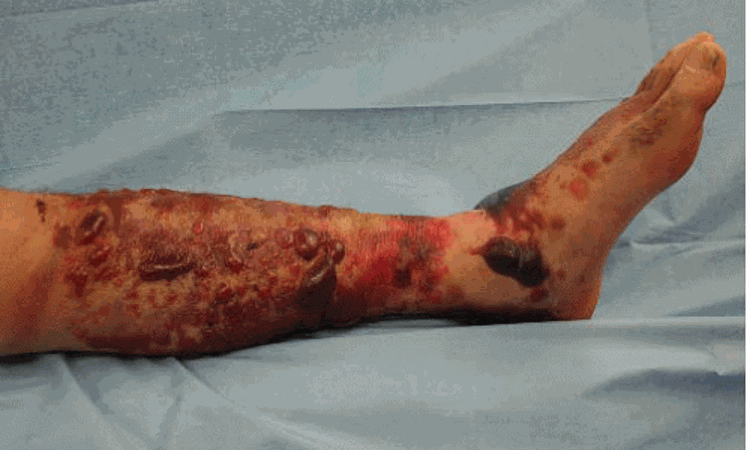- Home
- Medical news & Guidelines
- Anesthesiology
- Cardiology and CTVS
- Critical Care
- Dentistry
- Dermatology
- Diabetes and Endocrinology
- ENT
- Gastroenterology
- Medicine
- Nephrology
- Neurology
- Obstretics-Gynaecology
- Oncology
- Ophthalmology
- Orthopaedics
- Pediatrics-Neonatology
- Psychiatry
- Pulmonology
- Radiology
- Surgery
- Urology
- Laboratory Medicine
- Diet
- Nursing
- Paramedical
- Physiotherapy
- Health news
- Fact Check
- Bone Health Fact Check
- Brain Health Fact Check
- Cancer Related Fact Check
- Child Care Fact Check
- Dental and oral health fact check
- Diabetes and metabolic health fact check
- Diet and Nutrition Fact Check
- Eye and ENT Care Fact Check
- Fitness fact check
- Gut health fact check
- Heart health fact check
- Kidney health fact check
- Medical education fact check
- Men's health fact check
- Respiratory fact check
- Skin and hair care fact check
- Vaccine and Immunization fact check
- Women's health fact check
- AYUSH
- State News
- Andaman and Nicobar Islands
- Andhra Pradesh
- Arunachal Pradesh
- Assam
- Bihar
- Chandigarh
- Chattisgarh
- Dadra and Nagar Haveli
- Daman and Diu
- Delhi
- Goa
- Gujarat
- Haryana
- Himachal Pradesh
- Jammu & Kashmir
- Jharkhand
- Karnataka
- Kerala
- Ladakh
- Lakshadweep
- Madhya Pradesh
- Maharashtra
- Manipur
- Meghalaya
- Mizoram
- Nagaland
- Odisha
- Puducherry
- Punjab
- Rajasthan
- Sikkim
- Tamil Nadu
- Telangana
- Tripura
- Uttar Pradesh
- Uttrakhand
- West Bengal
- Medical Education
- Industry
Management of Post traumatic Blisters among Orthopaedic Surgeons: Current consensus

Post-traumatic blister is often encountered in high-energy injuries and following major limb surgeries. Currently, there is very limited evidence concerning blister management resulting in a lack of comprehensive guidelines for their management. The survey-based study was conducted by Siddhartha Sinha et al to appraise the current consensus in post-traumatic management among the practising orthopaedic surgeons and compare the same with the evidence in the literature.
The authors conducted an online questionnaire-based survey of orthopaedic surgeons concerning post-traumatic blister management practices. The questionnaire mainly focused on antibiotic prophylaxis, local invasive procedures, antiseptics dressings and additional treatment options regarding blister management. The target population for the survey was the practising orthopaedic surgeons with minimum qualification of a post-graduate degree in orthopaedics and who regularly manage trauma cases.
The questionnaire included open-ended and closed-ended questions formulated by two senior authors with over ten years of experience in orthopaedic trauma management.
The two analysing authors independently categorised the responses, and the response categories were finalised after subsequent discussion and mutual consensus. The frequencies of each of the categorical responses were then calculated.
The observations of the study were:
• A high prevalence (~78%) of systemic antibiotics administration was noticed for post-traumatic blister management. Similarly, large section of respondents (66.4%) advocated for either de-roofing or aspiration of blisters.
• Approximately 42% of respondents preferred sending blister fluid for cultures.
• More than half of the respondents used some form of local dressing to cover the blister bed to provide a healing environment.
• Additional opinions mostly included anti-inflammatory and swelling reducing measures.
• Few respondents also advocated for oral steroids for inflammation control.
The authors concluded that - the current study suggests a wide variation in the post traumatic blister management practices among orthopaedic surgeons. The limited evidence available in literature could be the potential contributing factor for such differences in clinical practices. The general measures to reduce soft-tissue oedema include cryo-therapy, limb elevation and rest, anti infammatory measures, splinting, and non-invasive measures like limited external fixation, blister aspiration and de-roofing in large blisters, and local antimicrobials moist dressing have been supported by the literature. However, the use of systemic antibiotics and steroids has not been supported by the literature and should be avoided unless indicated due to other reasons. Further evidence is required to strengthen the recommendations for post-traumatic blister management.
Further reading:
The Current Consensus on the Management of Post traumatic Blisters Among Orthopaedic Surgeons
Siddhartha Sinha, Arvind Kumar et al
Indian Journal of Orthopaedics (2022) 56:1011–1017
https://doi.org/10.1007/s43465-022-00612-9
MBBS, Dip. Ortho, DNB ortho, MNAMS
Dr Supreeth D R (MBBS, Dip. Ortho, DNB ortho, MNAMS) is a practicing orthopedician with interest in medical research and publishing articles. He completed MBBS from mysore medical college, dip ortho from Trivandrum medical college and sec. DNB from Manipal Hospital, Bengaluru. He has expirence of 7years in the field of orthopedics. He has presented scientific papers & posters in various state, national and international conferences. His interest in writing articles lead the way to join medical dialogues. He can be contacted at editorial@medicaldialogues.in.
Dr Kamal Kant Kohli-MBBS, DTCD- a chest specialist with more than 30 years of practice and a flair for writing clinical articles, Dr Kamal Kant Kohli joined Medical Dialogues as a Chief Editor of Medical News. Besides writing articles, as an editor, he proofreads and verifies all the medical content published on Medical Dialogues including those coming from journals, studies,medical conferences,guidelines etc. Email: drkohli@medicaldialogues.in. Contact no. 011-43720751


